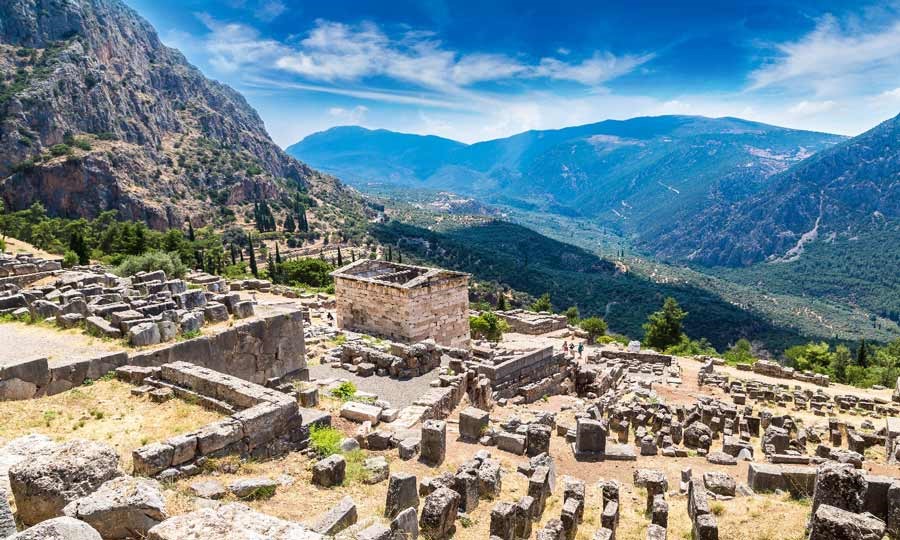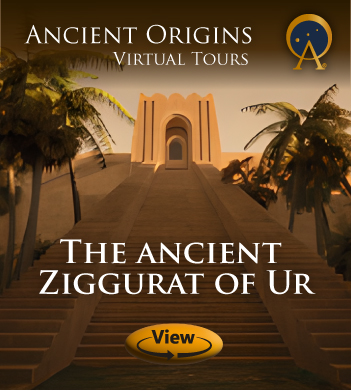
Situated in continental Greece on Mount Parnassus, Delphi was considered to be one of the most important cities of ancient Greece. It was believed to be home to the goddess Gaia, or Earth, and later to Apollo after slaying Gaia’s son, the snake Python. The Pythian games—similar to the Olympic Games—were held here every four years to honour Apollo’s slaying of the Python dragon.
Excavations in Delphi have found evidence of occupation at this site back to 1600 BC. During the Mycenaean period (14th-11th centuries BC), there were small settlements in Delphi dedicated to the Mother Earth deity. Subsequently, the worship of Apollo was established between the 11th and 9th centuries BC.
Delphi was once considered the centre of the world because the eagles of the East and West were said to meet here, and became a famous Greek centre during the 7 th century BC—complete with a theatre, gymnasium, stadium, and hippodrome—where treasuries from all over Greece were said to be kept.
However, Pythia, the Oracle, was the most eminent feature of Delphi, and some of the most important people from all over Greece—including demigods, according to Greek mythology—visited here seeking advice.

The Omphalos Stone at Delphi. Source: efesenko / Adobe Stock
Significant Sites
Most of the ruins that can be seen at Delphi today date from the time of peak activity at Delphi in the 6 th century BC.
- Temple of Apollo – The Temple of Apollo was the most important building in the Sanctuary of Apollo. The remains of the temple that can be seen today date to the 4 th century BC, but an earlier temple dating to the 6 th century BC had one existed on the same site.
- Treasury of the Athenians – The treasury is in the form of a Doric temple and dates to around 510 BC. It was built by the Athenians to house offerings to Apollo, and was constructed using marble from the island of Paros
- Theater – Dating from the 4 th century BC, with later alterations during the Roman period, the theatre could accommodate up to 5,000 people on 35 rows of stone benches. The theatre boasts spectacular views of the whole site of Delphi.
- Stadium – The stadium, which is located at the very top of the archaeological site, was constructed in the 5 th century AD. Its tiered stone seating could accommodate 500 spectators. It was built to host the Pythian Games.
- Castalian Spring – The Castalian spring was a series of monumental fountains and baths where the Oracle cleansed herself, as did those wishing to consult the oracle as a way to purify themselves.
Today, Delphi is a UNESCO World Heritage Site, listed for its incredible archaeological and historical value. Combined with its spectacular natural setting, and its rich mythological tradition, Delphi is one of the most awe-inspiring places to visit in Greece.
Top image: The Athenian treasury in Delphi. Source: Sergii Figurnyi / Adobe Stock.






